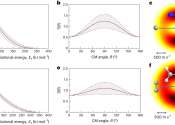Scientists unveil cosmic fingerprints of sulfur rings
For the first time, a team of scientists from HFML-FELIX at Radboud University has unveiled the cosmic fingerprints of sulfur rings. These results, published in Nature Communications, may shed new light on the way sulfur ...









